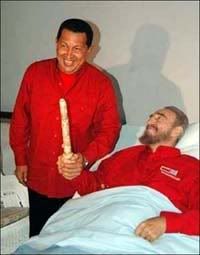Skip to comments.
Ancient flute found in Xinglongwa
China Central Television ^
| April 16, 2009
| Zhao Yanchen, Editor
Posted on 04/20/2009 8:03:09 PM PDT by SunkenCiv
Traditional Chinese musical instruments are believed to have originated from the reign of Huangdi, or the Yellow Emperor, some two thousand years ago. But a recent discovery by the Chifeng Cultural Academy in Inner Mongolia suggests that Chinese musical instruments could be 3-thousand years older than previously calculated... The ancient flute has long been kept at the Chinese Academy of Social Sciences in Beijing. It wasn't until recently that the flute was shown to the public. The ancient flute was made from the bones of bustard, a kind of bird usually seen in Northeast China. The tube is 18 centimeters long, with finger holes still evident. But it's main structure has partially eroded. Experts have restored the piece and professional musicians have been invited to play the flute. The Xinglongwa Site, where the ancient flute was unearthed, is the birthplace of the Xinglongwa Culture, a Neolithic culture in Northeast China found mainly around the border of Inner Mongolia and Liaoning Province. It is the earliest archeological culture in China to feature jade artifacts and to depict dragons. Apart from the flute, archeologists have also discovered graves at the site. It is thought that the owner of the grave site was male, who was probably the owner of the flute.
(Excerpt) Read more at cctv.com ...
TOPICS: History; Science; Travel
KEYWORDS: china; godsgravesglyphs
Archeologists from the Chifeng Cultural Academy have scrutinized a flute made of bones, which was unearthed at the Xinglongwa Site in Inner Mongolian in 1986. The ancient flute has long been kept at the Chinese Academy of Social Sciences in Beijing. It wasn't until recently that the flute was shown to the public.

1
posted on
04/20/2009 8:03:10 PM PDT
by
SunkenCiv
One man's bid to keep China's ancient music alive
AFP
Monday, April 20, 2009
An obsessive passion to revive a nearly forgotten music enjoyed by China's elite more than a thousand years ago has cost Li Kai his wife, his job and most of his savings. But the energetic, ever-smiling 57-year-old insists he has no regrets... The group plays every week in a pagoda in Xian in the northern province of Shaanxi, once known as Chang'an, grand capital of China during the Tang Dynasty (618-907), which is widely regarded as a high point in Chinese civilisation... Li's 18-member group is a mixed bunch, including a fashionable 22-year-old tourism student and a 59-year-old policeman nearing retirement. Li said that 60 years ago, when the People's Republic was founded following decades of civil war and revolution, there were 50 groups practising this music in Shaanxi. Now, after the ravages of the Cultural Revolution in the 1960s and 1970s which sought to wipe out China's ancient traditions, only 12 groups remain throughout the country, totalling 200 people. Li says Tang music is the earliest form of written music. While some academics believe it originated later than the seventh century, there is a general consensus that the music is among China's oldest. It blends drums, bells, flutes and pipes, and during the Tang Dynasty performances were for the elite only, something Li finds amusing as he points to the pedestrians who stop and listen as his group plays... His passion has cost him more than money -- his wife left him seven years ago, saying he was putting the music before her.
2
posted on
04/20/2009 8:03:44 PM PDT
by
SunkenCiv
(https://secure.freerepublic.com/donate/____________________ Profile updated Monday, January 12, 2009)
To: StayAt HomeMother; Ernest_at_the_Beach; 1ofmanyfree; 21twelve; 24Karet; 2ndDivisionVet; 31R1O; ...
3
posted on
04/20/2009 8:03:48 PM PDT
by
SunkenCiv
(https://secure.freerepublic.com/donate/____________________ Profile updated Monday, January 12, 2009)
Comment #4 Removed by Moderator
To: Yehuda
5
posted on
04/20/2009 8:11:56 PM PDT
by
rfp1234
(Phodopus campbelli: household ruler since July 2007.)
To: rfp1234
There are just too many possible replies to that photo. But, nah, not going there.
6
posted on
04/20/2009 8:16:53 PM PDT
by
datura
("Against all enemies, both foreign and domestic")
To: SunkenCiv
7
posted on
04/20/2009 8:17:49 PM PDT
by
JoeProBono
(A closed mouth gathers no feet)
Comment #8 Removed by Moderator
To: SunkenCiv
you have lost your flute, Grasshopper.
9
posted on
04/22/2009 5:39:21 AM PDT
by
wildbill
( The reason you're so jealous is that the voices talk only to me.)
To: wildbill
I woodwind say that too loud, the blind guy’s hearing is sensitive.
10
posted on
04/22/2009 2:11:18 PM PDT
by
SunkenCiv
(https://secure.freerepublic.com/donate/____________________ Profile updated Monday, January 12, 2009)
To: ArrogantBustard
"The ancient flute was made from the bones of bustard..."
Some relative of yours, perhaps?
To: Hegemony Cricket
a kind of bird usually seen in Northeast China. A distant relative, apparently.
12
posted on
04/27/2009 8:25:06 AM PDT
by
ArrogantBustard
(Western Civilization is Aborting, Buggering, and Contracepting itself out of existence.)
To: Hegemony Cricket
BTW, “Bones of Bustard” would be a heck of a name for a band.
13
posted on
04/27/2009 8:26:01 AM PDT
by
ArrogantBustard
(Western Civilization is Aborting, Buggering, and Contracepting itself out of existence.)
14
posted on
07/01/2019 2:18:48 PM PDT
by
SunkenCiv
(Imagine an imaginary menagerie manager imagining managing an imaginary menagerie.)
Disclaimer:
Opinions posted on Free Republic are those of the individual
posters and do not necessarily represent the opinion of Free Republic or its
management. All materials posted herein are protected by copyright law and the
exemption for fair use of copyrighted works.
FreeRepublic.com is powered by software copyright 2000-2008 John Robinson



